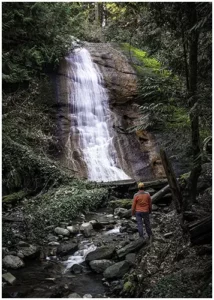
The Charming Northfield Falls in the Heart of Beach Estate Park
Looking to kill off an hour while in Nanaimo, BC? Just a short hop-skip and
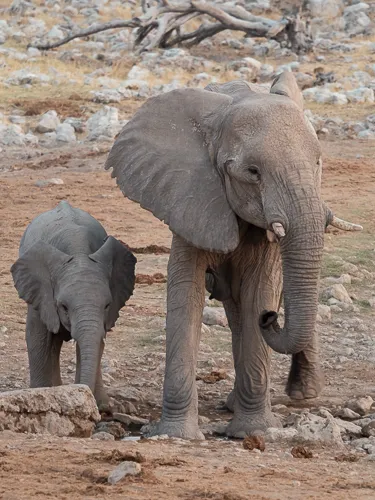

Welcome to Etosha National Park, a mesmerizing wildlife sanctuary located in Namibia. If you’re an avid nature lover and crave adventure, then this park is the best for your next vacation. From exotic animals roaming freely in their natural habitats to breathtaking landscapes that will leave you awe-struck, Etosha National Park has it all!
Below we will cover all there is to know about visiting Etosha National Park – from when to visit, to acquiring permits to camping grounds, what to look out for and taking those perfect wildlife photographs – so let’s dive right in!
Etosha National Park is rich with wildlife and offers visitors a truly unique experience. It is one of the most expansive game reserves in Africa, spanning over 22,000 square kilometres and featuring a diverse landscape.
When visiting Etosha National Park, expect to see large herds of elephants roaming freely throughout the park. Additionally, you can expect to witness some incredible predator-prey interactions as lions and other big cats hunt for their next meal.
The park also houses numerous bird species, making it a paradise for birdwatchers. In fact, over 340 species have been recorded within the park’s boundaries!
While exploring Etosha National Park, you will notice that there are several waterholes scattered throughout the area which attract different types of animals depending on the time of day. This provides excellent opportunities for observing wildlife up close.
It’s worth noting that safety should always be top priority when visiting any national park. Always follow instructions given by your guide or ranger, and never attempt to approach wild animals on foot.
When visiting Etosha National Park you can expect an unforgettable safari experience with endless opportunities for stunning photography and memorable moments with nature.
Etosha National Park is a stunning location that attracts tourists all year round. However, there are specific times during the year when visiting Etosha can be particularly rewarding. This obviously depends with your intended activity.
One of the best times to visit Etosha National Park is between June and October (during the dry season). During this period, water sources in the park become scarce, which forces wildlife to congregate around remaining watering holes, providing excellent game viewing opportunities.
If you’re interested in bird watching, then visiting Etosha during its rainy season may be more suitable for you. The rains start from November and continue till April. These months bring migratory birds along with them, making it an ideal time for bird enthusiasts.
It’s important to note that temperatures can get very high during Namibia’s summer months (December-February), so if you prefer cooler weather, it may be better to plan your trip accordingly between May-August as temperatures drop at night, making it comfortable for sleeping over at campsites.
While each season has its own unique advantages and disadvantages when travelling to Etosha National Park, ultimately choosing when to travel depends on your personal preferences and interests! In most cases, one visit may not be perfect for all activities.
Getting a permit to visit Etosha National Park in Namibia is a straightforward process. To secure a permit, you’ll need to do the following.
Always remember to respect wildlife by keeping a safe distance from animals while viewing them and never getting out of vehicles unless at designated areas. These simple steps make it possible to enjoy all that Etosha has to offer!
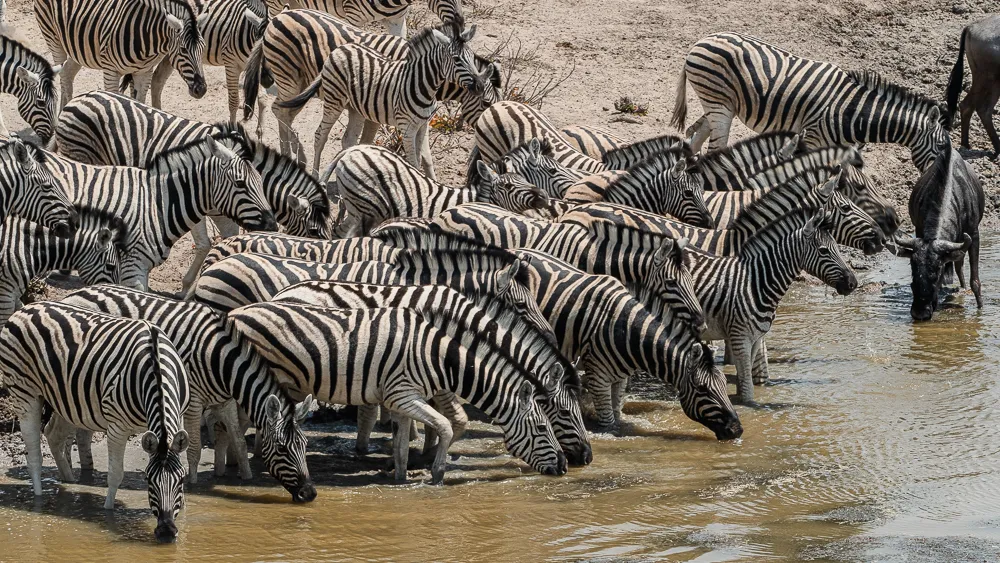
Etosha National Park stands out as the perfect place for wildlife enthusiasts and adventurers alike. The park boasts diverse ranges of animals, including lions, elephants, giraffes, zebras, and many more.
One of the most popular activities in Etosha is game driving. You can take a self-drive safari if you have a 4×4 vehicle, and have some knowledge about self-drive safaris. Most importantly, you should have done some research on things to look out for, suitable routes, etc. Alternatively, you can join a guided tour offered by a local tour operator where you just relax, sit back and get driven around and alerted when there is something to see. Driving through the park’s dusty tracks will provide you with the opportunity to see some rare species, such as black-faced impala.
Another exciting activity that you can enjoy while in Etosha is bird watching. With over 340 recorded bird species in the park, it’s no wonder why this activity is so popular here. Some birds that you might be lucky enough to spot include vultures, ostriches, and various types of eagles.
For those keen on learning more about African culture and history, there are also several cultural tours available around Etosha National Park.
These tours will give visitors an insight into Namibia’s rich heritage through visits to traditional villages and museums. If you’re looking for something more relaxing during your stay at Etosha National Park, consider taking a dip in one of its natural waterholes to cool off from the heat whilst watching wildlife come to drink. Whatever your interest may be, there’s always something amazing waiting for everyone at Etosha National Park!
Etosha National Park is a vast wildlife reserve located in the northern part of Namibia. One of the main attractions at Etosha National Park is the Etosha Pan, which covers an area of approximately 4,800 km². The pan is a large salt flat that is visible from space, and is currently one of the largest of its kind in Africa.
The word “Etosha” actually means “Great White Place,” referring to this massive white expanse. During dry months when water is scarce, animals flock to the pan as it becomes one of the few remaining watering holes for miles around.
As you drive through different areas within Etosha National Park, you’ll notice how diverse their landscapes are. However, when approaching the PAN, there’s not much else but endless plains stretching out into infinity with some distant mountains on either side – a truly breathtaking sight!
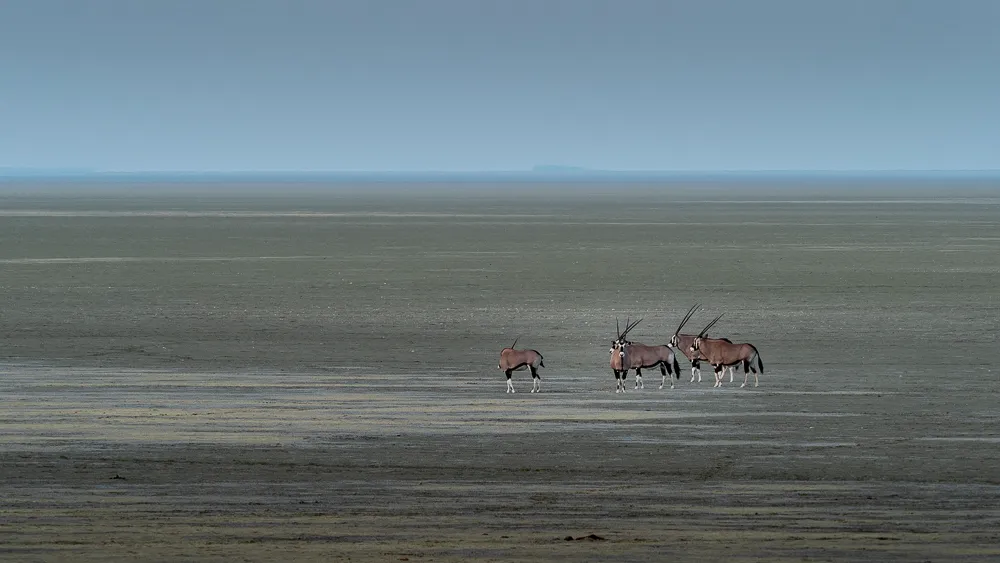
It’s important to note that while visitors can drive around most parts of Etosha without restrictions or guides (with certain limitations), getting up close and personal with wildlife on foot isn’t allowed anywhere within park boundaries – including near any edge of this magnificent salt pan!
Okaukuejo, the primary hub within Etosha National Park, is known for its bustling atmosphere and extensive facilities. As the park’s administrative center, it offers visitors ample accommodation options (ranging from luxury lodges to budget-friendly camping sites). The area also features a restaurant, shop, petrol station, and swimming pool.
The iconic waterhole at Okaukuejo attracts numerous wildlife species both during daytime and nighttime hours. Visitors can spend hours observing elephants quenching their thirst or lions stalking their prey from this vantage point.
For those seeking a more serene camping experience in Etosha National Park, the Olifantsrus campsite presents an ideal option. Located in the west-side of the park, Olifantsrus boasts an exclusive hide overlooking yet another active waterhole frequented by diverse wildlife.
Camping at Olifantsrus brings you closer to nature with its eco-friendly amenities such as solar-powered ablution facilities and barbecue areas. This unique campsite offers an immersive bush experience while ensuring minimal impact on the environment – perfect for environmentally conscious travellers visiting Etosha National Park in Namibia.
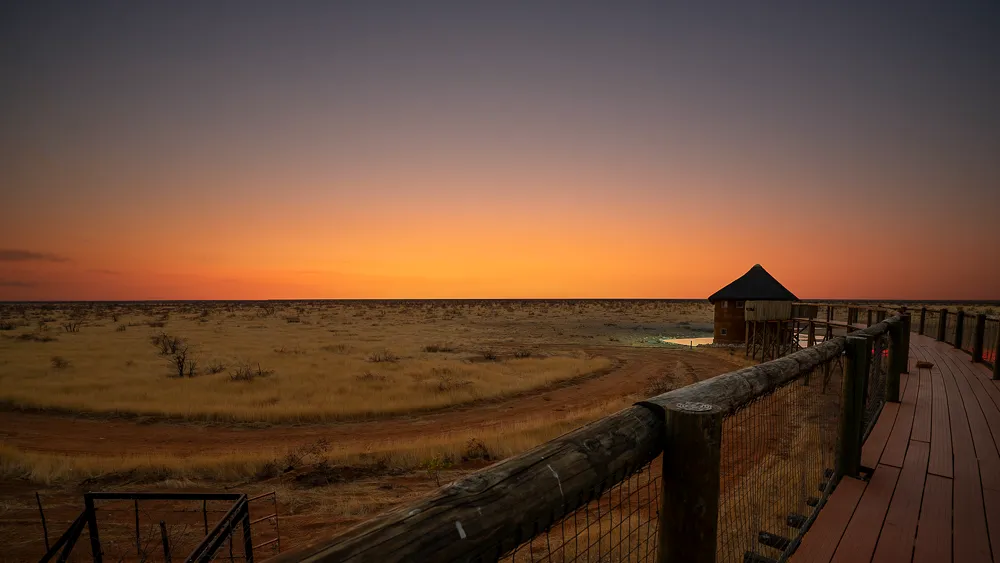
If you are a photography enthusiast seeking an opportunity to capture some breathtaking wildlife scenes in Africa, look no further than Etosha National Park in Namibia! This world-renowned park boasts vast plains, salt pans, and abundant wildlife, including lions, elephants, zebras, and giraffes.
Photographing this magnificent landscape can be a challenging yet rewarding experience for photographers of all levels. You need to be knowledgeable to capture stunning images at Etosha National Park. You also need the right equipment. Other measures include ensuring that your camera gear is safe from weather elements during your trip. Let’s get into more detail.
To capture the perfect wildlife shot in Etosha National Park, timing is everything. The best times to photograph animals are early mornings and/or late afternoons when the light is soft and warm. This lighting creates a stunning contrast between your subject and their surroundings, making for striking images.
Patience is key when waiting for wildlife to appear. It’s essential to take time and observe animal behaviour before taking any shots. Understanding an animal’s movements can help you predict where they may go next, giving you ample time to prepare your camera settings and composition.
When it comes to camera gear, bring a zoom lens with at least 400mm focal length or higher, as most of the animals will be far from the road. A tripod helps stabilize your shots during low-light conditions or long exposures while capturing stars at night.
Etosha National Park has strict rules about getting out of vehicles; thus, ensure that your lenses have image stabilization features since vibration reduction won’t work on shaky ground without a tripod.
Remember always to respect nature by keeping distance from animals – do not get too close! Keep noise levels down if necessary so as not to spook them away unexpectedly!
Also, research and plan meticulously. Before visiting the park, do some research on its geography, weather conditions, and wildlife behavior.
Predicting the movement of wildlife is as important as predicting the weather or the conditions you will face to get the perfect shots.
By following these tips above you’ll have an unforgettable photography experience that captures the true essence of this beautiful African destination!
Photographing the Okaukuejo watering hole at night in Etosha National Park can be a thrilling experience. The magical ambiance and the opportunity to capture unique wildlife moments make it a photography hotspot. These essential tips can help you make the most of your night photography adventure.
When I first learned about the opportunity of photographing the wildlife at night. I will admit, it didn’t thrill me. A few nights later and a bit of practice, I had warmed up to the idea and was embracing the challenges.
Be prepared to adapt your settings based on the changing conditions. With each click, you’ll improve your skills and capture the enchanting beauty of Okaukuejo watering hole at night.
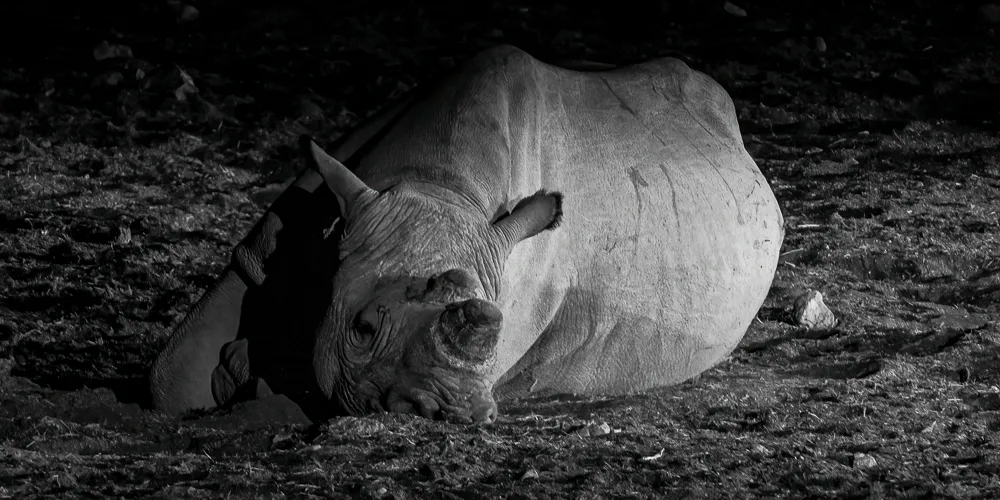
Etosha National Park is an incredible destination for wildlife enthusiasts and photographers alike. With its diverse landscapes and impressive array of animals, it offers endless opportunities to capture breathtaking shots.
The above information lets you in on what the park is like, what to expect, the best time to visit, how to secure a permit and what the PAN among other notable areas (like Okaukuejo and Olifantsrus camp) are all about. We’ve also covered photographing Etosha National Park highlighting some critical tips to follow if you wish to take some of the best (if not the best) wildlife photographs ever.
When planning your trip to photograph Etosha National Park in Namibia, remember to research the best times of year to visit based on your specific photography goals. For instance, there is a time to visit to capture wildlife and another time for capturing birds. You should also invest in quality gear such as a telephoto lens or tripod, be patient and observant while out on game drives, experiment with different angles and lighting conditions, avoid disturbing the wildlife by following park rules and guidelines.
Follow these tips to the letter and take advantage of all that Etosha has to offer. You are rest assured of come out with stunning images that will last a lifetime if you prepare accordingly. So, pack your bags (and camera equipment) and prepare yourself for an unforgettable african wildlife adventure in one of Africa’s most spectacular national parks!
Etosha National Park is renowned for its diverse wildlife, including elephants, lions, rhinos, and herds of zebra. Its unique feature, the Etosha Pan, is a vast salt flat attracting flocks of flamingos. With abundant wildlife and breathtaking landscapes, Etosha offers an exceptional safari experience in Namibia.
No, Etosha National Park is not bigger than Kruger National Park. Etosha covers 22,270 sq km, while Kruger National Park is bigger at 19,485 sq km.
“Etosha” means “Great White Place” or “Place of Mirages” in the local Ovambo language. This name refers to the vast Etosha Pan, a shimmering salt flat visible from space, which is a prominent feature of Etosha National Park in Namibia.

Looking to kill off an hour while in Nanaimo, BC? Just a short hop-skip and

Photography can be a fulfilling and enjoyable hobby that brings a creative outlet to your

Welcome to our guide to Photoshop tutorials for beginners: A Complete Beginner’s Tutorial for Learning